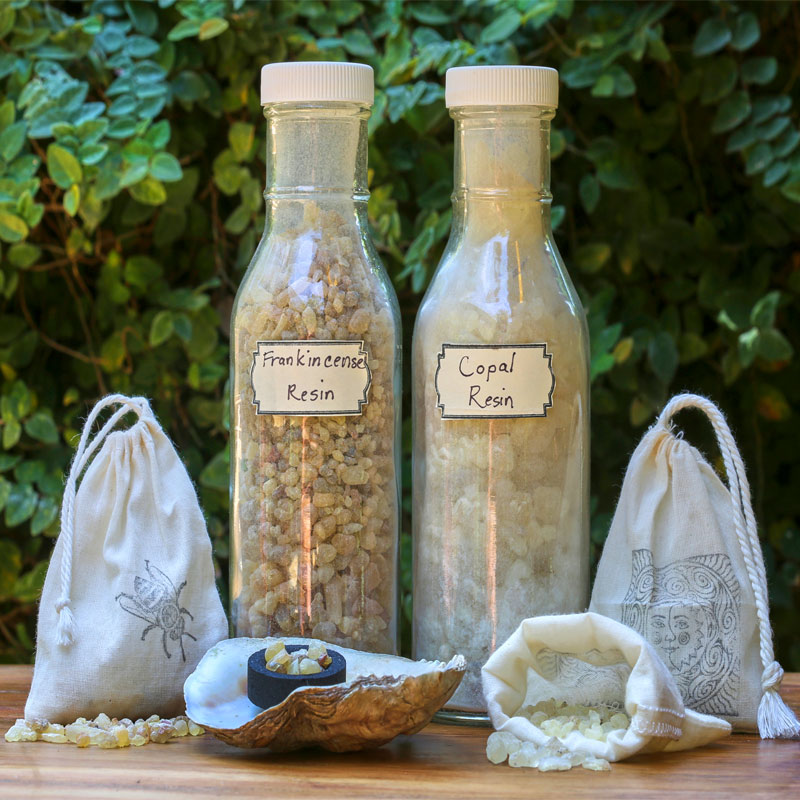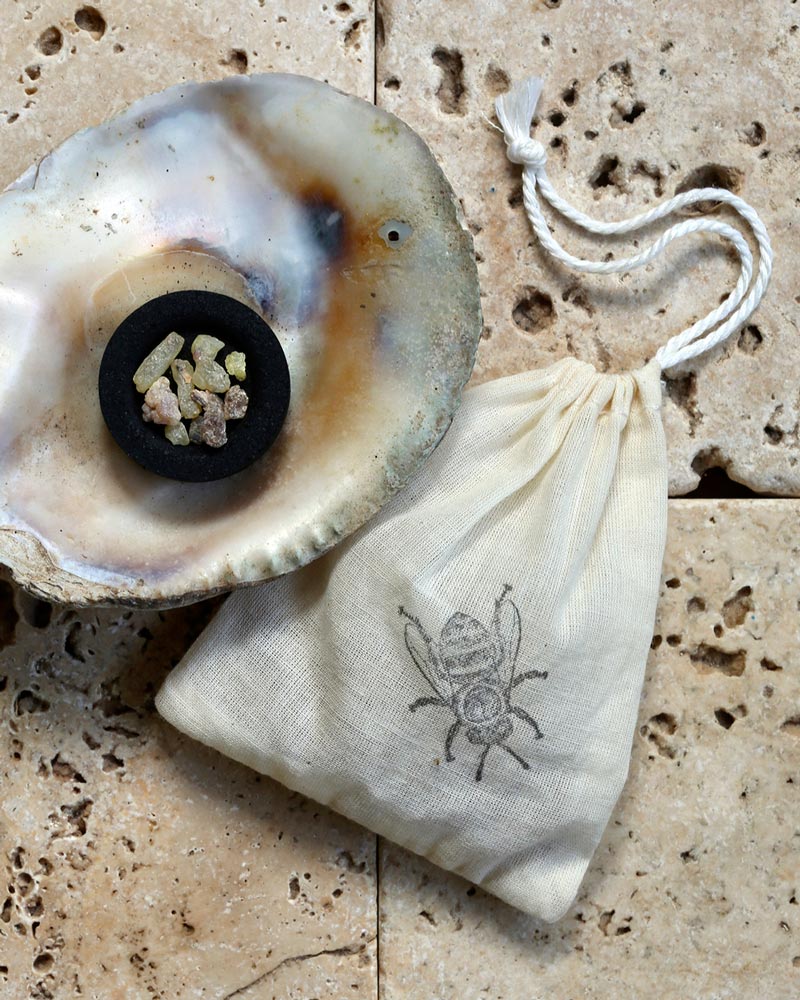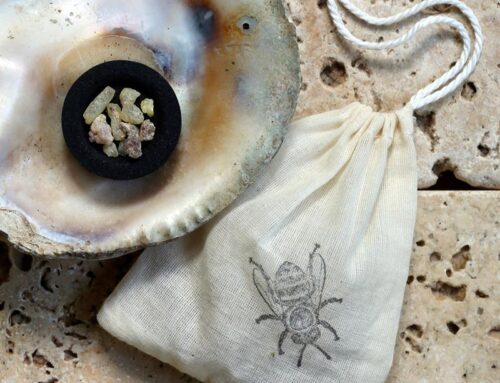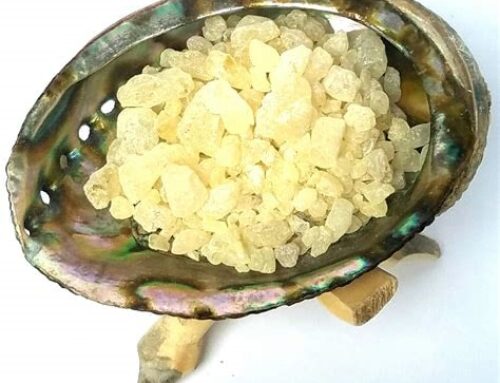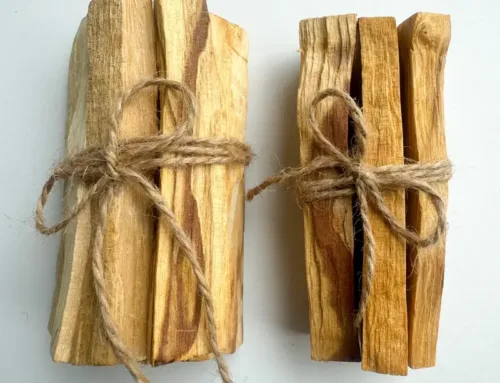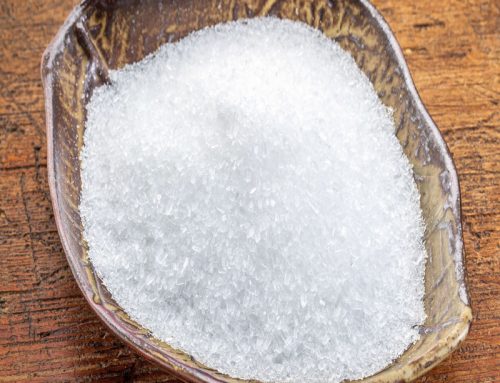- Cleanse your energy & physical space
- Improve health
- Spiritual connection
- Improve mood
- Alleviate anxiety & depression
- Remove mold and mildew in air
- Help allergies
How to burn Resins:
Using tongs, light a charcoal disk and place it on a heat resistant surface, drop small pieces of resin on the hot charcoal. You may add more resin pieces for the two m/l hours the charcoal burns. Meditate, breathe deeply and enjoy!
My personal favorite resins for burning are Frankincense and Copal.
What are the reasons we burn resins? Sage takes up so much of the spotlight when we talk about space clearing, that sometimes we neglect to mention the other tools there are for purifying and elevating the energy of your home—such as resins! Resins, like copal resin and frankincense resin, are burned to release more than just their pleasant scents. It is said that when we burn these resins, we are allowing their sacred smoke to cleanse our body and space. This use of resins in sacred ceremonies spans across many centuries, and many different cultures.
Copal Benefits and Uses
Resins are found beneath the bark of trees. Different trees produce different resins. The family of trees in Mexico, Central America and South America that create copal resin are called Bursera. The wood-scented resin extracted from these trees is actually not yet hard enough to be a true resin, and not soft enough to be a sap. Still, we call it copal resin, and embrace its transitory state by burning it, and allowing it to transform once more.
The uplifting positivity of copal smoke is believed to open the crown chakra. It works to rid the mind of anxiety and negative thoughts. Copal resin breakthroughs the blocks that are causing the circulation of your energy to stagnate. Copal benefits can be a useful ally in combating the everyday blues, as it helps to brighten your aura and leave you feeling emotionally lighter.
We’re not the first to use copal benefits for therapeutic practices. Copal incense was also a popular spiritual cleanser among the ancient Maya and Aztecs. Both the Maya and Aztecs also used copal resin in offerings. They burned the copal resin atop their pyramids as a gift to the gods, and the Maya even burned copal by their burial grounds.
How to Use Copal Resin
To use copal benefits in the purification of your crystals and home, you are probably going to need a charcoal round. The purpose of the charcoal is that it will allow the copal resin to burn continuously and safely at the same rate. Once you have lit the charcoal on a fireproof surface, allow it to burn until it has begun to turn white. Then place a few pieces of copal resin on the round. You definitely don’t need to use a lot when it comes to resin. A little goes a long way.
Immerse your crystals or crystal jewelry in the smoke coming off of the resin. This purifies the energy of the crystals. It sort of cleans the slate between uses. You can also clear the energy of your space with copal smoke by using a feather to disperse the smoke throughout your home.
Frankincense Resin Benefits and Uses
For centuries, Frankincense has been revered for its ability to both cleanse and elevate the energy around it. Most people know frankincense from the bible in which it was delivered to Jesus as an offering from one of the wise men, but frankincense has actually been used in the Middle East for far longer than that! You can embrace your inner wise man and use frankincense as an offering, or can simply employ its sacred smoke as a purifier for your spirit and space.
To implement it as an offering, use frankincense benefits on your sacred altar. Amplify the energy of your intention by burning frankincense resin as an offering to whatever guardian angels or divine beings you’d like to invite into your space. It ensures that protective and loving guides surround you. The frankincense benefits provide a stable and loving environment.
Frankincense doesn’t stop with blasting through your energy blocks, it helps to unblock your sinuses by stimulating the airways as well. Use it when you have a cold, to uplift your spirits when you’re feeling depressed. You can even chew frankincense resin for oral health. Chew it the same way you’d chew on gum and then pack it against a troubled area to help regenerate the tissues (note: the taste and texture is a little unpleasant – we’ve tried it!). These frankincense uses have been practiced for hundreds of years.
Frankincense grows on the Somali coast and the Arabian Peninsula. Harvesters have to make a deep cut into the trunk of a tree and remove a piece of bark to allow the sap to drip out. It usually takes about three months for the sap to harden into a resin.
How to Use Frankincense Resin
In addition to using sacred frankincense resin for cleansing a space or crystal, it is also a great scent for yoga and meditation. Frankincense benefits the crown chakra, so lighting this sacred frankincense will help open your mind for meditation.
To do this, begin by lighting a charcoal round. When the charcoal turns white, place a few pieces of frankincense on the round. Any more and the smoke will quickly overpower your space. This is the perfect spiritual cleanser to use in meditation because it will self-burn continuously for up to an hour without any further effort from you.
You can also use a feather waft the smoke around your space for spiritual enhancement, making sure to get it into the corners and window sills for a thorough cleanse. Submerge your crystals and crystal jewelry into the sacred smoke to purify their energy. (Material provided by Energymuse.com)
If you’d like to read some fascinating scientific research ~
Summary: Burning frankincense (resin from the Boswellia plant) activates poorly understood ion channels in the brain to alleviate anxiety or depression. This suggests that an entirely new class of depression and anxiety drugs might be right under our noses.
Religious leaders have contended for millennia that burning incense is good for the soul. Now, biologists have learned that it is good for our brains too. An international team of scientists, including researchers from Johns Hopkins University and the Hebrew University in Jerusalem, describe how burning frankincense (resin from the Boswellia plant) activates poorly understood ion channels in the brain to alleviate anxiety or depression. This suggests that an entirely new class of depression and anxiety drugs might be right under our noses.
In spite of information stemming from ancient texts, constituents of Bosweilla had not been investigated for psychoactivity,” said Raphael Mechoulam, one of the research study’s co-authors. “We found that incensole acetate, a Boswellia resin constituent, when tested in mice lowers anxiety and causes antidepressive-like behavior. Apparently, most present day worshipers assume that incense burning has only a symbolic meaning.”
To determine incense’s psychoactive effects, the researchers administered incensole acetate to mice. They found that the compound significantly affected areas in brain areas known to be involved in emotions as well as in nerve circuits that are affected by current anxiety and depression drugs. Specifically, incensole acetate activated a protein called TRPV3, which is present in mammalian brains and also known to play a role in the perception of warmth of the skin. When mice bred without this protein were exposed to incensole acetate, the compound had no effect on their brains.
“Perhaps Marx wasn’t too wrong when he called religion the opium of the people: morphine comes from poppies, cannabinoids from marijuana, and LSD from mushrooms; each of these has been used in one or another religious ceremony.” said Gerald Weissmann, M.D., Editor-in-Chief of The FASEB Journal. “Studies of how those psychoactive drugs work have helped us understand modern neurobiology. The discovery of how incensole acetate, purified from frankincense, works on specific targets in the brain should also help us understand diseases of the nervous system. This study also provides a biological explanation for millennia-old spiritual practices that have persisted across time, distance, culture, language, and religion–burning incense really does make you feel warm and tingly all over!”
According to the National Institutes of Health, major depressive disorder is the leading cause of disability in the United States for people ages 15–44, affecting approximately 14.8 million American adults. A less severe form of depression, dysthymic disorder, affects approximately 3.3 million American adults. Anxiety disorders affect 40 million American adults, and frequently co-occur with depressive disorders.
Story Source:
Materials provided by Federation of American Societies for Experimental Biology. Note: Content may be edited for style and length.
The statements made within this website have not been evaluated by the Food and Drug Administration. These statements and the products of this company are not intended to diagnose, treat, cure or prevent any disease.

